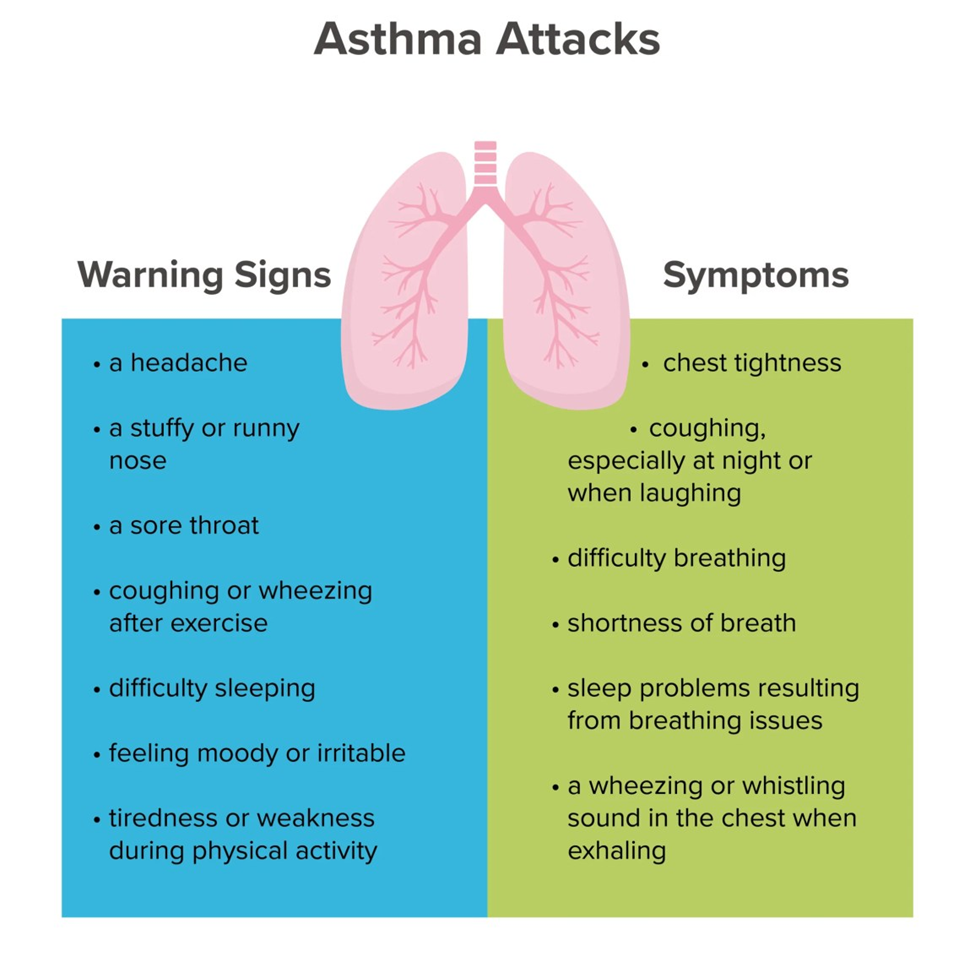A child is admitted to the hospital with asthma. Which assessment findings support this diagnosis?
Productive cough, rales
Fever, general malaise
Stridor, suprasternal retractions
Nonproductive cough, wheezing
The Correct Answer is D
A. Productive cough, rales
A productive cough with rales (crackling or bubbling sounds in the lungs) is more indicative of conditions like pneumonia or bronchitis, not necessarily asthma.
B. Fever, general malaise
Fever and general malaise are more consistent with infections and not specific to asthma.
C. Stridor, suprasternal retractions
Stridor (high-pitched sound during breathing) and suprasternal retractions (visible sinking of the area just above the breastbone during inhalation) can be associated with upper airway obstruction but are not typical findings in asthma.
D. Nonproductive cough, wheezing
Asthma often presents with a nonproductive cough and wheezing. Wheezing is a common characteristic of asthma due to narrowed airways.

Nursing Test Bank
Naxlex Comprehensive Predictor Exams
Related Questions
Correct Answer is B
Explanation
A. "This is common for teens to threaten suicide when they want attention."
This statement is dismissive and could contribute to a lack of appropriate intervention. It is essential not to trivialize or assume that all suicide threats are attention-seeking, as they may indicate underlying distress and a need for support.
B. "Your friend's threat needs to be taken seriously and immediate help for your friend is important."
This is the most appropriate response. It acknowledges the seriousness of the situation, emphasizes the need for immediate help, and reflects a responsible and caring approach to addressing a friend's mention of suicide.
C. "If your friend mentions suicide a second time, you will want to get your friend some help."
Waiting for a second mention is not appropriate, as any mention of suicide should be treated seriously. Delaying intervention until a second mention could be dangerous, as the friend may be in immediate distress.
D. "You need to gather details about your friend's suicide plan."
While gathering information about a friend's thoughts and plans is important for a comprehensive assessment, it is not the primary concern in the immediate response to a suicide mention. The immediate focus should be on ensuring the friend's safety and involving appropriate professionals for help.
Correct Answer is B
Explanation
A. Parents are shocked when their child is diagnosed with a malignant bone tumor. The orthopedic surgeon discusses the options of limb amputation and a limb-salvage procedure. The parents are asked to consider each option.
This situation involves a difficult medical decision, but it does not describe a conflict or ethical dilemma that necessitates immediate involvement of the ethics committee. The parents are being informed about treatment options, and their input is sought in making a decision for their child's care.
B. The physician recommends that a young child be taken off the ventilator. The parents, who are divorced and have joint custody of the child, have differing views about whether to discontinue the ventilator.
This scenario presents a clear ethical dilemma involving the withdrawal of life-sustaining treatment. The differing views of the divorced parents with joint custody may require the involvement of the hospital ethics committee to provide guidance and facilitate resolution.
C. A child in end-stage renal failure is placed on the renal transplant list. The parents are asked to sign permission for surgery after a cadaver kidney is located. One parent is out of town and gives telephone consent.
While organ transplantation involves ethical considerations, the described situation does not present an immediate conflict or dilemma that requires the ethics committee's urgent involvement. The scenario seems to involve a common process of obtaining consent for surgery.
D. After initial therapies have failed, a child with leukemia is evaluated for a new cancer protocol. The child, age 8 years, gives assent for the new treatment, and his parents give their consent.
This scenario involves a child participating in the decision-making process through assent, and the parents providing consent. While significant, it does not describe a conflict or ethical dilemma that requires immediate ethics committee involvement. The situation seems to involve standard procedures for obtaining informed assent and consent for medical treatment.
Whether you are a student looking to ace your exams or a practicing nurse seeking to enhance your expertise , our nursing education contents will empower you with the confidence and competence to make a difference in the lives of patients and become a respected leader in the healthcare field.
Visit Naxlex, invest in your future and unlock endless possibilities with our unparalleled nursing education contents today
Report Wrong Answer on the Current Question
Do you disagree with the answer? If yes, what is your expected answer? Explain.
Kindly be descriptive with the issue you are facing.
